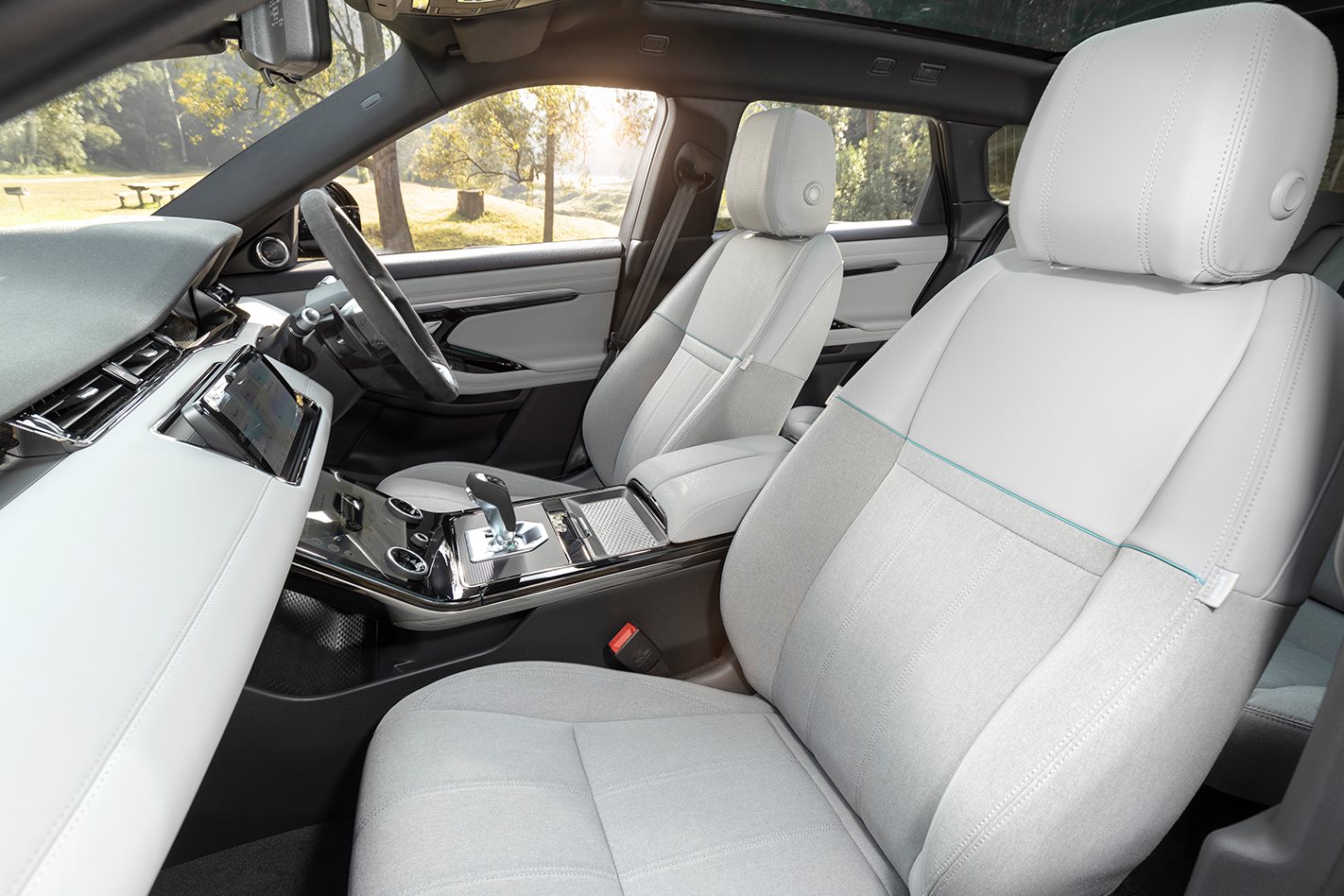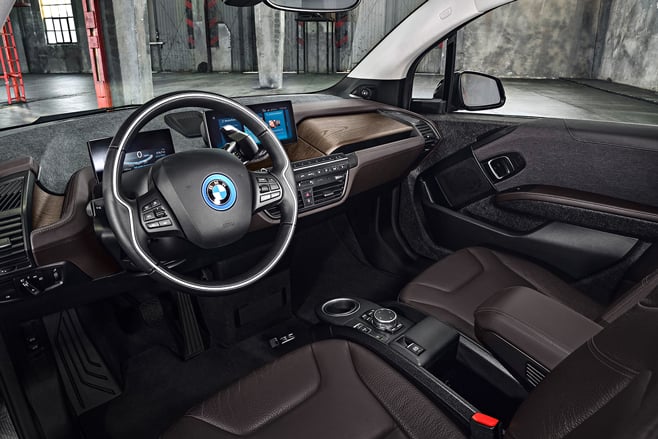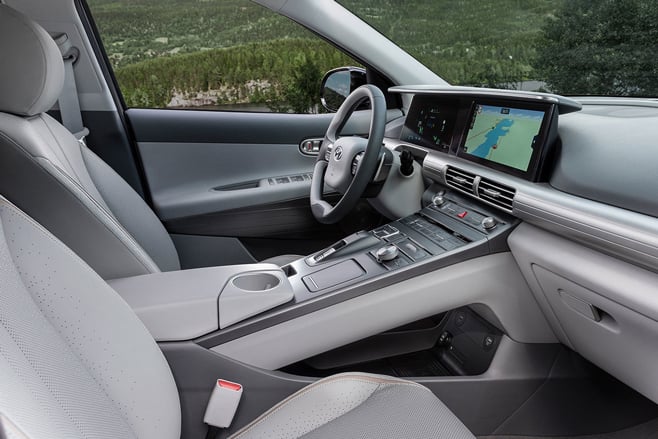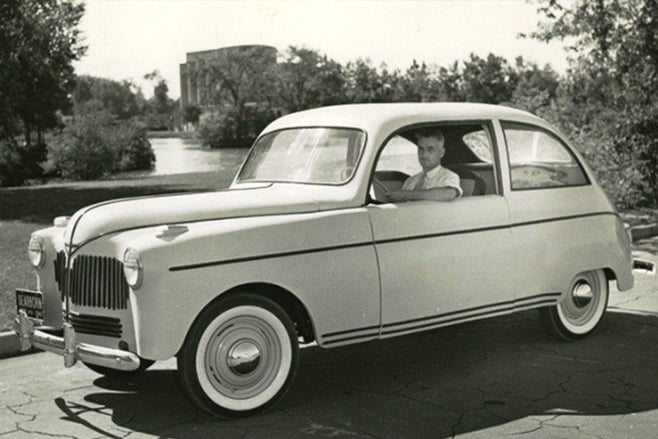
It was only a few years ago ( or months, even?) where supple leathers and high-quality plastics (and of course, carbon fibre) defined the level of luxury in a car. When it came to choosing an interior option, saying “Darling, let’s opt for the pleather” didn’t quite have the same seductive ring as being able to boast about sliding into a buttery-smooth cabin filled with Nappa leather calfskin.
In the same vein as fashion, food, furniture, jewels, travel and fuel, collective consciousness has meant the desire for eco-friendly materials or a more sustainable manufacturing process is rising. “Renewable” “Green Alternative” and “Sustainably Sourced” are the new luxury buzzwords and suddenly, boasting about a car full of dead cows is fait de malséant – and a quick google of “how many cows did it take to make [your car here]” might result in some shocking facts.
In the case of greenwashing – where it seems like we’re doing a good thing, but it is actually all hot air – the automotive industry has also been guilty. That vegan interior you thought you were so smugly using to offset your emissions? It might also be doing the opposite, as many plastics are made from highly toxic petrochemicals, derived from fossil fuels anyway. Thankfully, however, the ‘damned if you do/don’t’ times are changing.

Tesla’s vegan seats
Of course, many marques have been going down this road for some time. In the luxury sector, Mercedes-Benz, have been offering alternatives to leather as an option for years, as has BMW and Mini, Porsche, Tesla and more – the catch being that some models still are only available with a leather steering wheel or the alternate leathers are not considered completely vegan, due to the dyeing process.
Even the king of synthetics, Alcantara, has been releasing an annual sustainability report for almost a decade and has achieved complete carbon neutrality, holding the title of the first Italian industrial product made sustainably (even though it’s not entirely made in Italy).
In fact, Alcantara’s latest report claims that the company has been moving away from petrochemicals to use more renewably sourced polymers and raw materials, including sugar cane, corn leaves, rice straw, general waste, recycled paper and wood derivatives. By 2020, Alcantara aims to have engineered a completely bio-based product.
Most recently, there has been a shift to ethically-sourced Eucalyptus, both as a cosmetic material (as seen in the BMW i3’s dashboard trim) and as a fibre for soft textiles, or as Jaguar Land Rover likes to call it, ‘Eucalyptus Melange’. The benefit of Eucalyptus is that it uses less water, grows quickly and requires less surface processing. Jaguar Land Rover claims that its Eucalyptus Melange seats even use less H2O than Alcantara and many other alternate leather materials.
Another supertree being put under the spotlight of late is the Jute-like Kenaf fibre, also found in the BMW i3 (actually, over 80 percent of the i3 is made from recycled materials or renewable resources, with zero petrochemical-based plastics and, though some trims are leather, they are tanned with olive leaf extract). When it comes to offsetting carbon, Kenaf is one of the most absorbent plants on the planet, soaking up 3-8 times more C02 from the air than a pine tree. It is also up to 30 percent lighter than the most common materials used in car interiors.

BMW i3
There are some manufacturers going above and beyond. Land Rover’s newest baby, the Range Rover Evoque contains 33 percent recycled materials and offers the aforementioned Eucalyptus Melange material option and an interior made by Danish textile company Kvadrat, which is a wool and synthetic suede cloth made from 53 percent plastic bottles (it’s also found in the Velar).
Audi’s incoming e-tron models boast carbon-neutral options that include seats made from recycled plastics, synthetic leathers or recycled microfibres and a floor carpet made from recycled fishing nets. Even Bentley, which most recently caused a PETA stir for the fact it’s Mulsanne mega saloon uses more than 15 cows for its leather-lined cabin, announced a vegan interior option for the 2020 Flying Spur, with more models to come.

Hyundai Nexo
And then there’s Hyundai’s effort – the Ioniq and incoming Nexo both boast eco paints and cabin materials derived from bamboo mulch, soybean mulch and sugar cane mulch. A lot of this is a byproduct of harvest or agricultural waste and is incredibly hardy, fast-growing, uses little water and results in a strong fibre for car seats and cabins.
Hyundai also puts a lot of thought into the development of these “plastics”, enlisting a team of robot arms to spray and swab sunscreens, perfumes, moisturisers and hand sanitisers onto the newly developed materials, while also testing in extreme heat and cold to ensure longevity in the real world (and with that five-year warranty, they must).

Ford’s Soybean Car
With many brands reacting to the enormous growth and interest in renewable textiles across many industries, the choices will only get more vast as the material engineering gets better, particularly as consumers cotton on to the impact small choices can make.
Those who might not be ready for an EV, for example, might still enjoy the option of carbon neutral, cruelty-free or earth-friendly interior as a gesture towards change.
After all, it was good enough for Henry Ford when he created the Soybean Car as a solution to a steel shortage during WWII and as an alternative to plastics… so, better now than never.
All stories in this series



